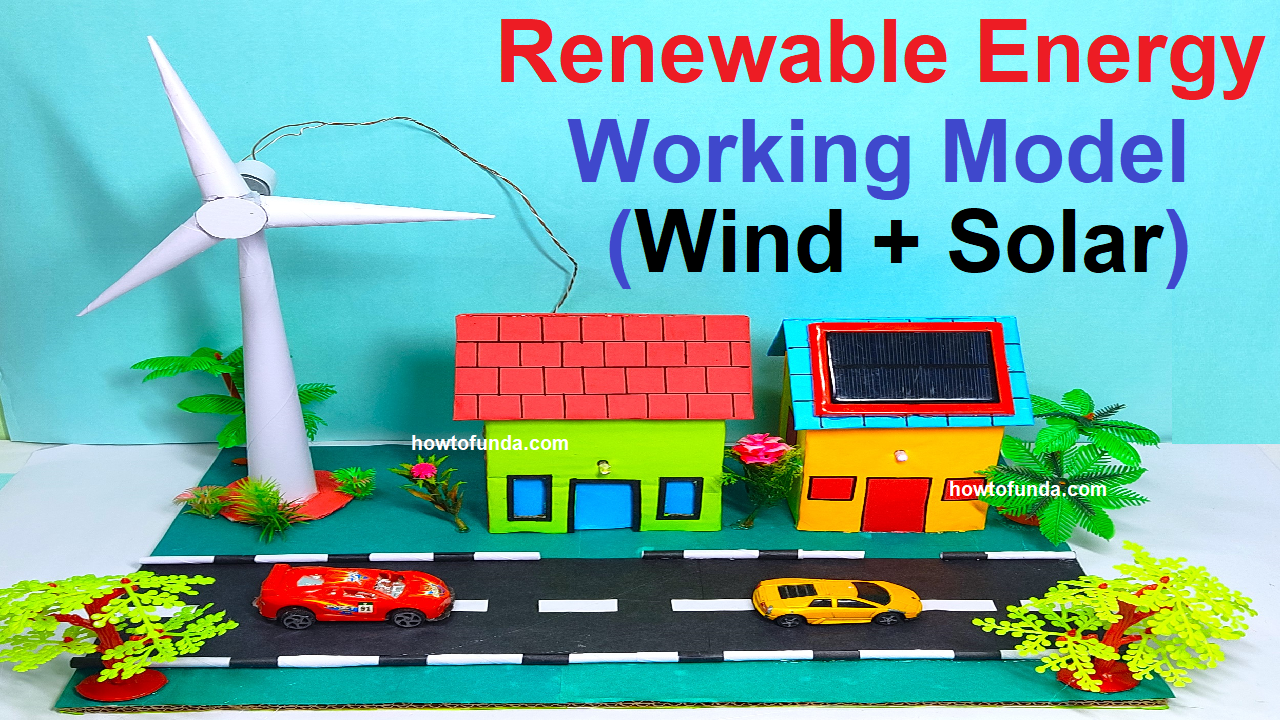What is Renewable Energy?
Renewable energy is energy generated from natural resources that are replenished over time such as sun, wind, water, and biomass.
These sources of energy are considered to be renewable because they are not depleted by use, unlike fossil fuels.
The most common forms of renewable energy are solar, wind, hydroelectric, geothermal, and biomass energy.
- Solar energy model: This model can demonstrate how solar panels convert sunlight into electricity.
- Wind energy model: This model can demonstrate how wind turbines convert wind energy into electricity.
- Hydroelectric energy model: This model can demonstrate how flowing water can be used to generate electricity.
- Biomass energy model: This model can demonstrate how organic matter can be converted into energy.
How to make the working model of renewable energy
A working model of renewable energy can be a great way to demonstrate the various forms of clean energy and how they can be used to generate electricity.

#renewableenergy #workingproject #workingmodel #sciencefair #scienceexhibition #scienceproject #windturbine #windmill #windenergy #solarenergy
Step by Step Video Instructions of making renewable energy
How does the model show the economic benefits of renewable energy?
A: The model may demonstrate how renewable energy can lead to cost savings over time, as the cost of renewable energy sources such as solar and wind power continue to decline.
It may also show how investing in renewable energy can create jobs and stimulate economic growth.
Q: How does the model demonstrate the scalability of renewable energy?
A: The model may show how renewable energy can be used on both a small and large scale, from powering a single household to providing energy for entire communities or even countries.
It may also demonstrate how different renewable energy sources can be used in different environments and locations.
Q: How does the model show the potential for renewable energy to meet global energy demand?
A: The model may demonstrate how renewable energy sources have the potential to meet a significant portion of global energy demand and help reduce greenhouse gas emissions.
It may also show how a combination of different renewable energy sources can be used to provide reliable and sustainable energy.
Q: How does the model demonstrate the impact of renewable energy on the environment?
A: The model may show how renewable energy sources have a low environmental impact compared to traditional fossil fuels, and do not produce pollutants or greenhouse gases. It may also demonstrate how renewable energy can help preserve natural resources and protect biodiversity.
Q: How does the model demonstrate the scientific principles behind renewable energy?
A: The model may use scientific principles such as the photovoltaic effect in solar cells, the Betz limit in wind turbines, and the Carnot cycle in geothermal systems to show how renewable energy is generated. It may also demonstrate how the natural resources used in renewable energy, such as sunlight, wind, and water, are replenished and sustainable.
Q: How does the model show the relationship between renewable energy and climate change?
A: The model may demonstrate how renewable energy can help reduce greenhouse gas emissions and mitigate the impacts of climate change. It may also show how renewable energy can be used in conjunction with other climate mitigation strategies, such as energy efficiency and carbon capture and storage.
Q: How does the model demonstrate the potential for renewable energy to replace fossil fuels?
A: The model may show how renewable energy sources have the potential to replace fossil fuels as the primary source of energy.
It may demonstrate how a combination of different renewable energy sources can provide reliable and sustainable energy, and how advances in technology can increase the efficiency and scalability of renewable energy.
Q: How does the model demonstrate the future of renewable energy?
A: The model may show the latest developments and innovations in renewable energy technologies, such as advances in battery storage, smart grid integration, and the increasing use of renewable energy in transportation. It may also demonstrate how the increasing adoption of renewable energy can help to create a more sustainable future.

